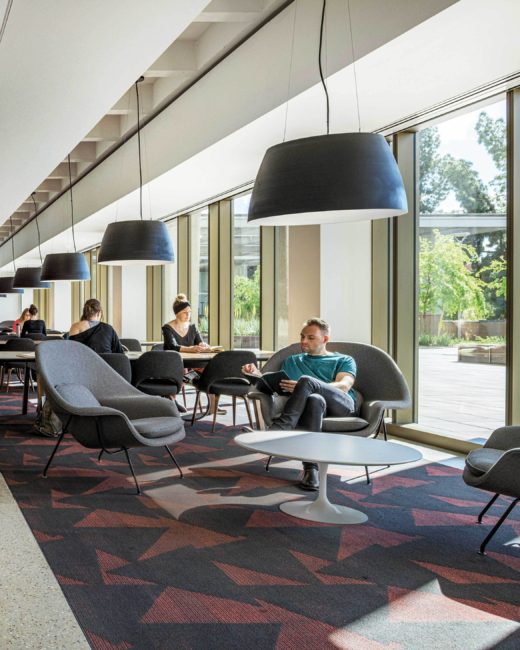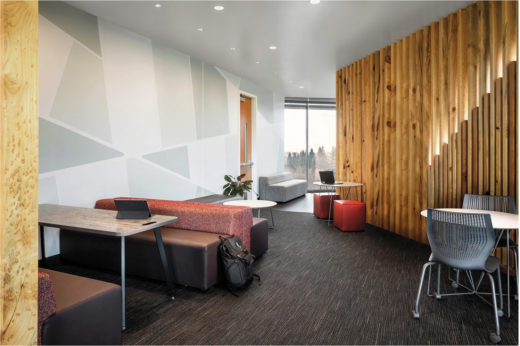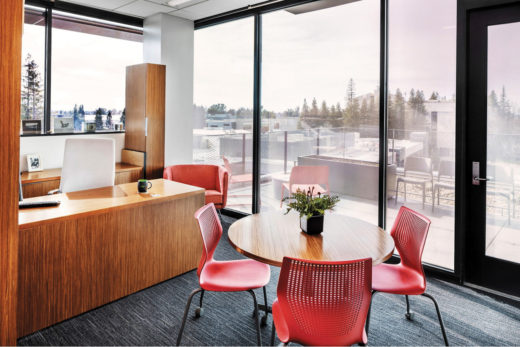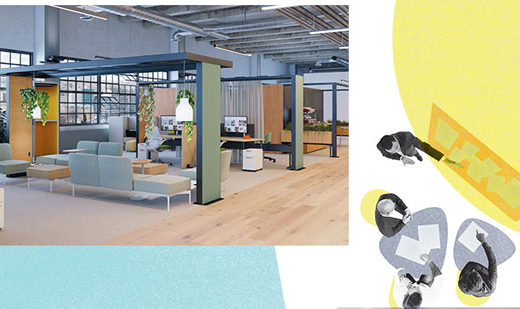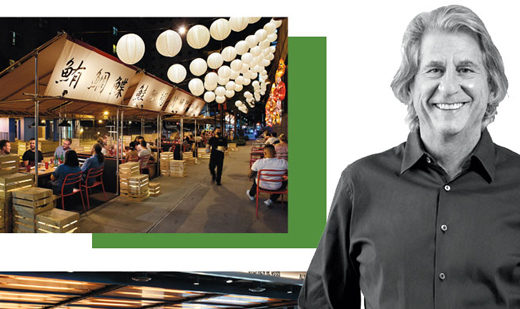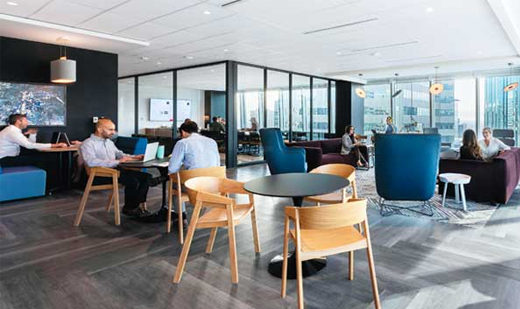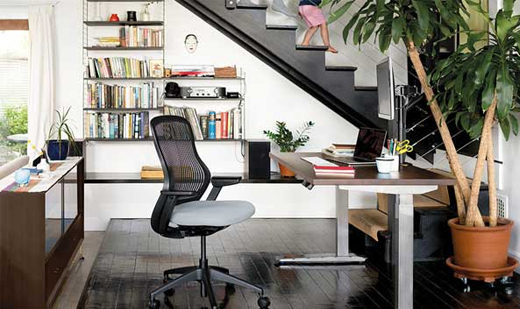Like the workplace, where social and technological developments of the past decades have led to profound shifts in how— and where—people work, the space of higher education is also undergoing dramatic change. And that was before the Covid-19 pandemic, which, from early evidence, seems to have only accelerated a process already well underway. Principles once understood to be at the bedrock of a college curriculum—the separation between education and industry, clear delineation between academic departments, and segregation of on campus and virtual learning—are now outmoded, replaced by a more porous, multidisciplinary approach to pedagogy that is guided less by an academic institution’s predetermined templates and more by an individual student’s interests and increased focus on student engagement.
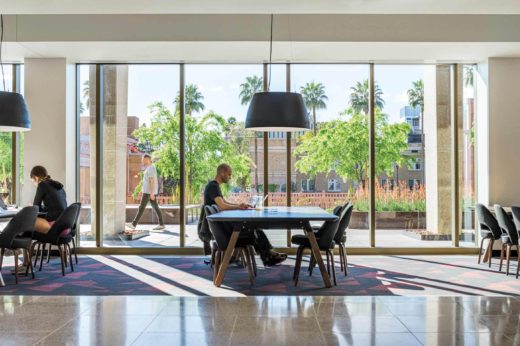
These days, online programs and in-person learning are increasingly seen as complementary rather than conflicting approaches. In fact, as Knoll research into this burgeoning hybrid called the “connected campus” has shown, over 30 percent of students were taking at least one course online before Covid-19 forced a dramatic expansion of the virtual classroom. But that doesn’t mean that the college campus will become a thing of the past. As Anne Gazzaniga, Senior Vice President and University Planner at Arizona State University (ASU) noted in a Knoll Design Days 2020 panel discussion with Knoll’s Vice President for Education/ Healthcare Carol Crane, while the future is hard to predict, certain themes have emerged during the pandemic that indicate trends for the coming years: education will continue to be a mix of online and in person learning; institutions will develop greater tolerance for telework and staff working remotely; and students and faculty will seek out a strong sense of community on campus.
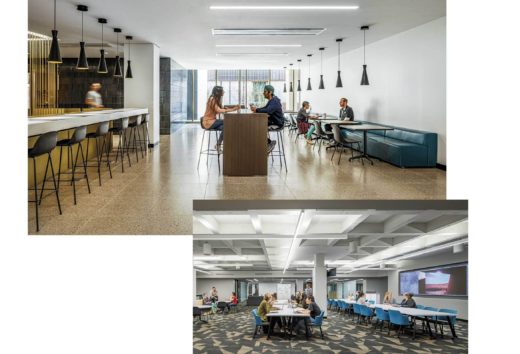
Connectivity is the narrative theme for so much of the design work being done on campuses today. At ASU in Tempe, the $90 million renovation of Hayden Library, a building from the 1960s, is a perfect example. Central to the new plan was relocating the main entrance to the plaza level—a more obvious spot than its previous position underground—to more fully integrate the complex with the pedestrian mall directly outside its doors. Windowed spaces along the building’s perimeter are no longer obscured by curtains and now frame what ASU’s interior design Coordinator Lauren Pachuta Herrerra has characterized as a giant “campus living room.” New seating areas overlook the bustle of activity outside and project a more welcoming image to students, faculty, and even the local community, which is encouraged to participate in library programs. A portion of the book stacks were moved off site, making room for interdisciplinary learning labs and other teaching and study spaces, further increasing traffic to the building and reinforcing its increasingly central role in campus life. Herrerra cites the range and adaptability of the Knoll product line, including furniture like Rockwell Unscripted® which can be easily moved and reconfigured, as an asset for a building that now caters to a range of users and an everchanging variety of activities.
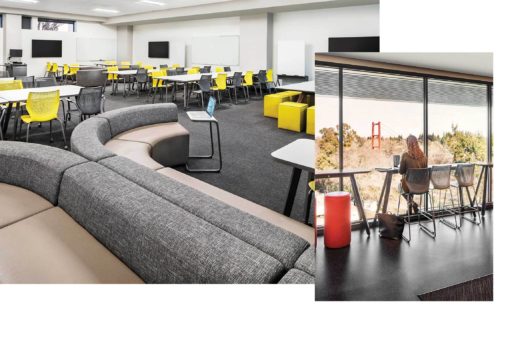
Improving the flexibility of learning spaces is crucial to the design of the new Ernest E. Tschannen Science Complex, at California State University, Sacramento—the only new academic building added to the campus in a decade. Similar to ASU, the classroom model at Sac State was already undergoing change prior to Covid-19, which architect and Sac State Project Manager Tania Nunez describes as a move away from the traditional model—a chair with an attached desk that is fixed in a tiered configuration—to more adaptable open spaces populated with a variety of furniture. While she reports that Sac State has seen an increase in enrollment in its online programs during the pandemic, she, like ASU’s Gazzaniga, doesn’t consider it a bad omen for the campus. More to the contrary, she explains: “This past year has shown that distance learning is great, particularly for older students who are juggling many responsibilities; however, students want to be on campus—they crave being with each other and the spontaneous interactions they can have with their professors.” She also reports that students have embraced the flipped classroom—a model where class time is spent engaging with one another, working together in groups on homework assignments, which is supplemented by lectures that largely take place online. And while Nunez recounts that on their first days in these newly designated “learning studios,” students were puzzled by the lounge seating, automatically gravitating to tables and chairs, however, once they understood that k. lounge modular seating from Knoll was indeed an option for them, it became the most popular spot in the room.
While learning can take place in both a virtual and physical classroom, campus buildings traditionally have not been as flexible, typically serving one purpose for a set period of the day or year. In recent years, one-use rooms have been increasingly replaced by gathering spaces where people can eat, study, socialize and professionally network all at once or in some overlapping succession, reducing the quantity of spaces that are vacant after class hours or during the summer. This can accomplish two things for a higher education institution: optimizing capital investment while recognizing that well-designed facilities can attract and help retain students and faculty. After all, a new building can become an ambassador of sorts of its institution.
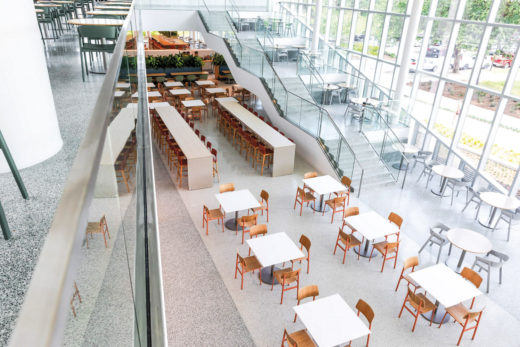
This ambassadorial role is well played by The Commons, a recent addition to Tulane’s campus in New Orleans. Like ASU and Sac State, Tulane has been experimenting with multipurpose spaces in existing buildings and The Commons, a new facility that is connected to the student union, is a natural next step. Here, a mixture of dining, lounge and informal study areas require a range of seating and table options with a dynamic presence, explains Tulane’s Heather Seaman, Director of the Lavin-Bernick Center for University Life. The goal was to use furniture to create distinct and welcoming areas within the vast high-ceiling space, delineating a variety of “rooms without walls,” according to Seaman. Combining Knoll and Muuto seating and tables provides the youthful, vibrant aesthetic that Tulane was seeking without sacrificing comfort and durability. Like the Hayden Library renovation and the new Tschannen Science Complex, the multi-use Commons demonstrates the commitment higher education institutions are making to diversify the spaces where students study and socialize—a strong indication that these social hubs will continue to play a leading role in the connected campus.
Photography by Chip Allen, Gabe Border, Sara Essex Bradley
More to Read
This story is from Knoll Works—our annual publication showcasing how our constellation of brands and planning capabilities create inspiring workspaces.
















